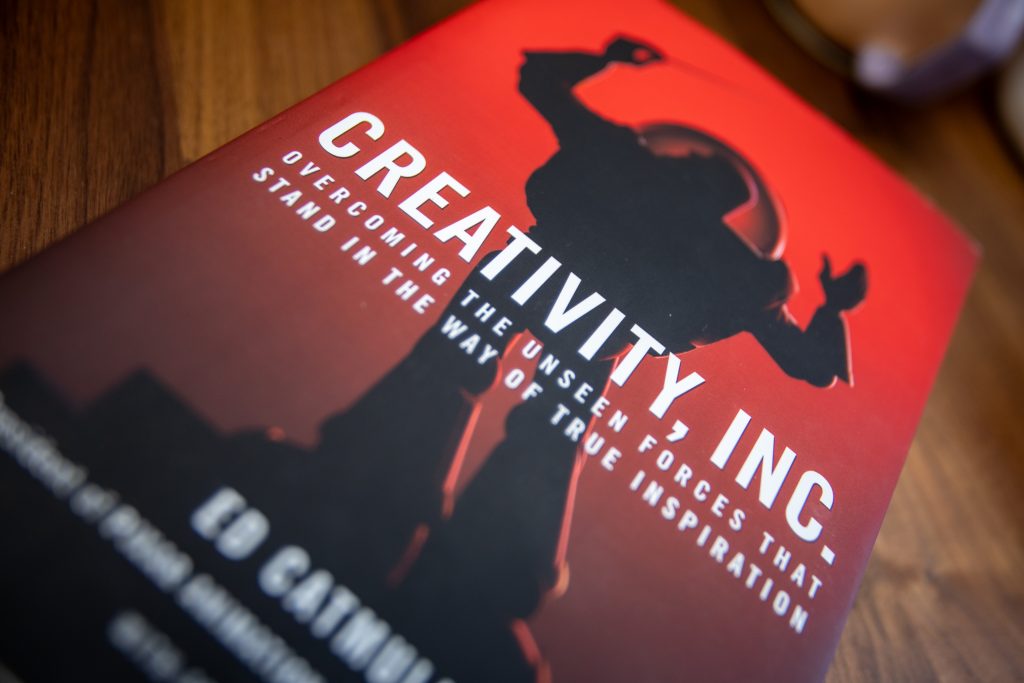“What’s wrong? Why are you crying?”
It was a Wednesday afternoon and I was working from home, curled up on the sofa with a book and my partner.
“It’s stupid, and you’re going to laugh at me.” I sniffled.
“Is it the book?”
I nodded disconsolately.
“Wait, isn’t that a work book? Why are you crying at a work book? Aren’t they about, like, marketing?”
It was several minutes before they were able to coax the answer out of me.
I was crying because Steve Jobs is dead.
That wasn’t new information either.
I was reading the afterword in Creativity. Inc, the latest in the line of books I’m reviewing. The entire book is wholesome, nostalgic and insightful, but the afterword is something else. It’s a moving account of ‘the Steve they knew’ at Pixar, and it had me bawling harder than I did the first time I saw Nemo’s mum die. It’s a fitting end to a book whose dedication page simply reads “For Steve”.
I was culturally aware of Steve Jobs’ passing years ago, but I can’t say it ever moved me. I’d never been a fan of Apple products, and when you consider his portrayal as an egotistical and difficult man throughout much of the media, you can see why I’d never taken an interest in his life and work before. Reading this though, Steve became a man whose obstinate genius and brusque affection reminded me of my late grandad. It was a completely unexpected side effect of what can only be described as a truly brilliant book.
What’s inside?
Creativity, Inc. is an autobiographical leadership manual by Ed Catmull, the former President of Pixar and Disney Animations, which is co-written by a journalist called Amy Wallace. They’ve woven Ed’s hard-earned leadership lessons into a beautiful book that feels like being hugged by all your favourite characters from when you were five.
Although I’ve never met Ed, or even heard of him before Will lent me his book, Creativity, Inc. makes him feel like an old friend. The writing style is warm, natural and engaging, with flawless copy and a delightful array of anecdotes that are so well-written that they read like a conversation with Ed himself. I know that’s the point, but it’s lovely.
The body of the book takes you from Ed’s early life through academia and into the workforce, underpinned by the narrative of his first dream; making the first computer-animated feature film. Once Toy Story was released in cinemas, Ed found himself with a new dream; to find a way to keep Pixar alive and thriving for as long as he could. Leadership gave him a new purpose and propelled him into a series of choices that would lead to the whimsical culture that is so important to Pixar’s success.
The biographic narrative is compelling, providing a rich history of what was happening at the time and a wealth of context for readers who, like myself, hadn’t been born yet and struggle to conceive of a world without the internet.

Ed comes across as a genuinely humble, collaborative and creative person throughout the book. Even as he guided his company to the heights of success, he constantly talks about his own limitations. There is an anecdote about finding the right table for meetings, which acknowledges both his position as a leader and his own shortcomings as a result. It’s lovely to hear from a leader who is totally motivated by collaboration, and who is open about owning his own mistakes.
I love Ed’s takes on creativity and culture too. He seems driven by a fundamental belief that people should be happy and free, which is a beautiful worldview. The collaborative environment that Ed talks about throughout the book is evidently something he has adopted very personally. Creativity, Inc. is full of accounts of other people’s thoughts, opinions and input. It’s a beautiful tapestry of all the best creative minds that have passed through Pixar during Ed’s tenure. Together they provide the pieces for well-rounded leadership lessons that anyone could apply to their own company.
Ed also discusses a fundamental commitment to Pixar’s company values. He took steps such as refusing allocated parking for anyone in the company, giving employees the right to self-expression at their desks and prioritising communal celebration as a company. Values are an essential part of any company, and it was fascinating to learn about what drives the company that produced so many of the films I was raised on. Values are also what interested me when I applied to Search Stack. It was the creative-first approach that they talked about on their website that made me instinctively feel that I would be at home here.
Towards the end of Creativity, Inc. Ed talks about taking over management of Disney Animation during their acquisition, and there’s a sense that he’s proving his leadership ideas in the process. He didn’t just build a company and afford its success to his own ideas. He’s actually got demonstrated experience of taking over a floundering company and making it better with his own methods. Ed’s first success with his model of working at Disney was Tangled, which has been my all-time favourite Disney film ever since it came out. Knowing that Pixar’s leadership team had a hand in making it makes absolute sense to me, and gives it a special something.
My recommendation:
By now I’ve rambled on for nearly 900 words, so I think it’s time I gave you my verdict. Creativity, Inc. has earned a full five stars, and I don’t have a single bit of criticism for it. I loved every single page, and I’ve never been so moved by a leadership book in my life. While I’m not in a leadership position at present, I’ll be taking everything I learned from this book into any future role and recommending Creativity, Inc. to every manager I meet.
This book gives you the inside scoop on the films that characterised my earliest childhood memories, from Monsters Inc. to Finding Nemo. Having Ed’s insights set against such a familiar backdrop makes Creativity, Inc. feel like a cosy retreat, which is not what I expected from a leadership book, but everything I would expect from Pixar.
Rating: 💜💜💜💜💜 (I’d give it more if I could tbh)
TL;DR
This is the best book I’ve read on Soph Reads Stuff so far, and I can’t see it being replaced for a very long time. It’s a beautiful autobiography with helpful anecdotes, gorgeous writing and impactful lessons. Everybody should read this.
Want to chat about books? Find me on LinkedIn –> Sophie Colclough 🥰







